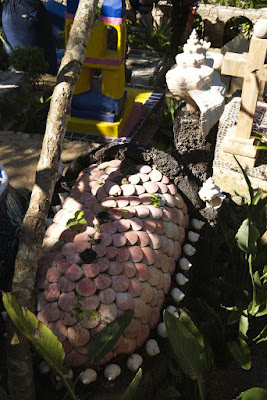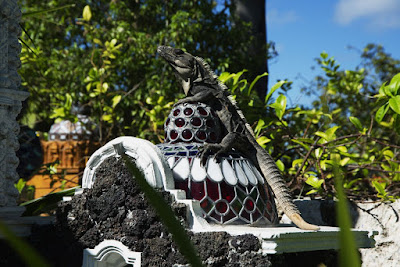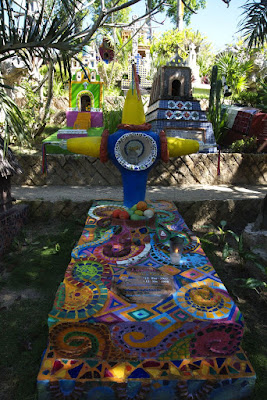BURIAL CUSTOMS
This page will focus on varying burial customs and gravestones. Please click on image to enlarge. Contributions appreciated. Copyright applies, remaining with the contributor at all times.
---------------------------------
ANTARCTICA
Spot the penguin
 |
| (c) Priory Studios |
---------------------------------
CROATIA
 |
| (c) Priory Studios |
 |
| (c) Priory Studios |
 |
| (c) Priory Studios |
 |
| (c) Priory Studios |
 |
| (c) Priory Studios |
 |
| (c) Priory Studios |
 |
| (c) Priory Studios |
---------------------------------
FRANCE
CASSEL
 |
| (c) Priory Studios |
---------------------------------
GREECE
Photo used under Creative Commons from Wikimedia Commons, the work of DerHexer
To quote from Wikipedia...
The area took its name from the city square or dēmos (δῆμος) of the Kerameis (Κεραμεῖς, potters), which in turn derived its name from the word κέραμος (kéramos, "pottery clay", from which the English word "ceramic" is derived).[1] The "Inner Kerameikos" was the former "potters' quarter" within the city and "Outer Kerameikos" covers the cemetery and also the Dēmósion Sēma (δημόσιον σῆμα, public graveyard) just outside the city walls, where Pericles delivered his funeral oration in 431 BC. The cemetery was also where the Ηiera Hodos (the Sacred Way, i.e. the road to Eleusis) began, along which the procession moved for the Eleusinian Mysteries. The quarter was located there because of the abundance of clay mud carried over by the Eridanos River.
In ancient Greece, pottery was used for funeral urns, memorial vases, and various funerary sculptures. In a fashion similar to that of the Egyptians, the deceased were buried with all that they might need in the afterlife... food, vessels, wine, jewellery, even weapons...The body of the deceased was first left to lie in state, then a funeral procession accompanied it to the final resting place, whether it was to be a tomb, or a single grave.
Some tombs of important figures have been found to hold the remains of horses which had been sacrificed after drawing the coffin in the funeral procession.
Funeral monuments from the Kerameikos cemetery at Athens
Images by Templar52 Used under Creative Commons
Women played a major part in the funeral rites in that they prepared and washed the body, anointed it with oils and made a wreath to adorn it. Some bodies have been found with coins in the mouth "to pay the ferryman' on their journey to the afterlife.
The most common practice was interment from around 3000BC, however cremation upon a pyre commenced about 1100BC... This was often depicted in early Greek classic studies. This was to revert again when interment became the only accepted practice when the Christian era began.
Though in Greece, open caskets are not unusual, this isn't a common practice worldwide in Greek communities. In Australia, for instance, where there are quite large Greek communities, particularly in Melbourne, the funerals are more in keeping with local traditions. While the majority are still interments, some cremations do occur. Viewings generally no longer occur in the home, though they are available at the funeral home if a family wishes. The Greek services are conducted by the priest, accompanied by a chanter.. Lighting of candles for the deceased and all those who have gone before is a very important part of the ceremony.
Before the casket leaves the church, the mourners file past the casket, and either kiss the casket or the cross on it, to farewell the deceased...Some prefer to kiss their fingers and touch the casket. The deceased's family follows the priest, the rest of the mourners follow... and then the family return to the front pew and are greeted by all who offer their condolences as they pass by them.
Many gravestones include a box for candles, holy oil or photos... often photos of the deceased are on the headstones...
"Rituals for the after-death period take place on the 3rd day after the death, the 9th day, the 20th, 40th, 6 months, 9 months, 1 year, 3 years, and 5 years. Those rituals are commemorations, in which family and friends participate, and which are known as ‘Mnemosyna’. Special prayers are offered during a ‘Mnemosyno’ for the parting of the deceased from the world of the living. "
This was something that I thought was great when I was a child... the wheat was shaped as a dome and was sweetened with honey... we children couldn't wait for the service to be over to taste this delicacy.. of course, we had no idea what it symbolised.
"Furthermore, at those remembrances, boiled wheat is offered to the attendees. The wheat represents the reciprocity and solidarity between the dead and the living. Since ancient times it is believed that this offering will remit the deceased’s sins, and that it has the meaning of renaissance (Wilson, 2006; Spiridakis, 1972). "
You can read more about some of the customs here...
Death in the Modern Greek Culture
Greek Orthodox Funeral Traditions | A Good Goodbye ~ Funeral …
This was something that I thought was great when I was a child... the wheat was shaped as a dome and was sweetened with honey... we children couldn't wait for the service to be over to taste this delicacy.. of course, we had no idea what it symbolised.
"Furthermore, at those remembrances, boiled wheat is offered to the attendees. The wheat represents the reciprocity and solidarity between the dead and the living. Since ancient times it is believed that this offering will remit the deceased’s sins, and that it has the meaning of renaissance (Wilson, 2006; Spiridakis, 1972). "
You can read more about some of the customs here...
Death in the Modern Greek Culture
Greek Orthodox Funeral Traditions | A Good Goodbye ~ Funeral …
---------------------------------
IRELAND
BELFAST
Shankill
All in this section (c) Priory Studios
(c) Priory Studios
(c) Priory Studios
(c) Priory Studios
(c) Priory Studios
(c) Priory Studios
(c) Priory Studios
(c) Priory Studios
(c) Priory Studios
(c) Priory Studios
(c) Priory Studios
(c) Priory Studios
(c) Priory Studios
(c) Priory Studios
(c) Priory Studios
(c) Priory Studios
(c) Priory Studios
(c) Priory Studios
(c) Priory Studios
(c) Priory Studios
(c) Priory Studios
(c) Priory Studios
(c) Priory Studios
(c) Priory Studios
(c) Priory Studios
(c) Priory Studios
(c) Priory Studios
(c) Priory Studios
(c) Priory Studios
(c) Priory Studios
(c) Priory Studios
(c) Priory Studios
(c) Priory Studios
(c) Priory Studios
WICKLOW
Boy and dog..
 |
| (c) Priory Studios |
Peeping
 |
| (c) Priory Studios |
 |
| (c) Priory Studios |
 |
| (c) Priory Studios |
---------------------------------
MADAGASCAR
In Famadihana, Madagascar, a sacred ritual unearths the dead
By Jo Munnik and Katy Scott, for CNN....
(CNN) — In the rolling hills of Madagascar's central highlands, the Merina tribe exhumes the remains of their ancestors for a celebration-cum-family reunion.
In this sacred ritual, which occurs every five to seven years, a number of deceased relatives are removed from an ancestral crypt. Living family members carefully peel the burial garments off the corpses and wrap them in fresh silk shrouds.
The festivities begin and guests drink, converse, and dance with their forebears.
"We wrap the bodies and dance with the corpses while they decompose," says anthropologist Dr Miora Mamphionona.
Just before the sun sets, the bodies are carefully returned to the tomb and turned upside down. The crypt is then closed for the next five to seven years.
The family reunion
Famidihana, or 'the turning of the bones', is a sacred ritual practiced by some ethnic groups in Madagascar.
The Malagasy people believe their ancestors serve as intermediaries between the living and God and therefore have the power to intervene in events on earth.
Many ethnic groups in Madagascar practice a fusion of Christianity and traditional beliefs, yet they do not believe in heaven or hell.
"For us death after the bones are decomposed will take us to a second life -- a life that is similar to the living life," explains Mamphionona.
---------------------------------
MALAYSIA
Penang Jewish Cemetery
The oldest Jewish cemetery in Southeast Asia is a monument to a disappearing community.
Tucked away behind high, unkempt walls on the side of a busy road that feels worlds away from the charming shophouse streets of tourist-friendly George Town, it’s easy to miss the Jewish Cemetery (despite the name printed in English on its gates). If the gates appear locked, a visitor need only knock or shout; the proprietor will soon be out to open them, and give you a brief tour, from the oldest grave, erected in 1835, to the newest, erected in 2011.
Upon first entering the cemetery, the graves—formed of long, low triangles or domes similar to ossuaries found in the Middle East—appear to be unmarked. But if you walk around to the other side you can find inscriptions. Most are in Hebrew, a few accompanied by English translations. Nearly all are hidden in small alcoves on the side of the casket-like grave stones, facing away from the entrance.
View this place »
Thanks to Atlas Obscura
---------------------------------
MEXICO
Note the very personalised gravestones, the cemeteries are very colourful. You can read a little about some of the customs by following these links...
Presentation above by Alan Godoy
(c) Priory Studios
(c) Priory Studios
(c) Priory Studios
(c) Priory Studios
(c) Priory Studios
(c) Priory Studios
(c) Priory Studios
(c) Priory Studios
(c) Priory Studios
(c) Priory Studios
(c) Priory Studios
(c) Priory Studios
(c) Priory Studios
(c) Priory Studios
(c) Priory Studios
(c) Priory Studios
(c) Priory Studios
---------------------------------
MONTENEGRO
"Death and the Afterlife. Funerals are large, elaborate occasions. In the cemetery, a spread of salads and roasted meats is presented in honour of the deceased; this is repeated a year after the death, at which point the gravestone is placed in the ground. Gravestones often bear photographs as well as inscriptions."
Excerpt from http://www.everyculture.com/Sa-Th/serbia-and-Montenegro.html
(c) Priory Studios
(c) Priory Studios
An unusual custom in Montenegro is the posting of death notices on lampposts, trees, wherever the public can see them. It seems quite practical in many ways, at least the neighbours or friends passing by will see these.
For a wonderful interesting blog on Montenegro, please visit
http://montenegro-for.me/about-me/
(c) Priory Studios
---------------------------------
ROMANIA
The Merry Cemetery
https://en.wikipedia.org/wiki/Merry_Cemetery
Extract: The Merry Cemetery (Romanian: Cimitirul Vesel pronounced [t͡ʃimiˈtirul ˈvesel]) is a cemetery in the village of Săpânța, Maramureş county, Romania. It is famous for its colourful tombstones with naïve paintings describing, in an original and poetic manner, the people who are buried there as well as scenes from their lives. The Merry Cemetery became an open-air museum and a national tourist attraction.
The unusual feature of this cemetery is that it diverges from the prevalent belief, culturally shared within European societies – a belief that views death as something indelibly solemn. Connections with the local Dacian culture have been made, a culture whose philosophical tenets presumably vouched for the immortality of the soul and the belief that death was a moment filled with joy and anticipation for a better life (see also Zalmoxianism).
A collection of the epitaphs from the Merry Cemetery exist in a 2017 volume called Crucile de la Săpânța, compiled by author Roxana Mihalcea [1]
Getty Images: Jean-Philippe Tournut
---------------------------------
28 Headstones That Defied Expectations | Atlas Obscura
Old Sydney Burial Ground Australia
Folk customs and beliefs in Croatia
Cemeteries in Antarctica...
Buromskiy Island Esperanza Base Scotia Bay Whalers Bay (South Shetland Islands)
Japan
Inside the columbarium, thousands of colorful, high-tech Buddhas guard the ashes of the dead
































































The Mexican graves are very interesting!
ReplyDeleteThey sure are...thanks for commenting, Sharon. I hope got add at least one new place each week... I've always had a fascination with different customs.
DeleteI love the Merry Cemetery in Romania and the naïve paintings.
ReplyDeleteThere sure are some amazing cemeteries... Thanks for the comment.
ReplyDelete